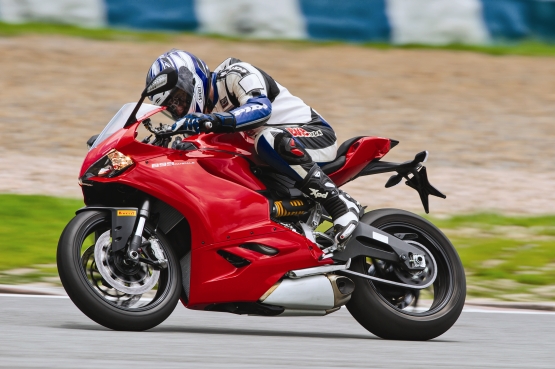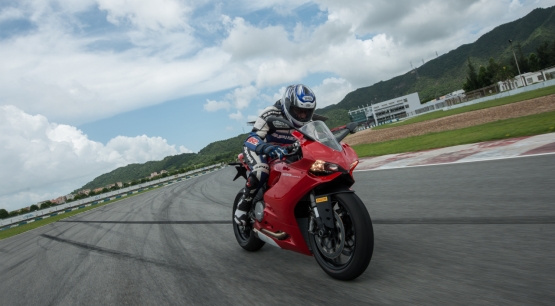We rode the new ‘supermid’ Ducati 899 Panigale on the Zhuhai racetrack in China recently. Here are our first impressions
Story: Aspi Bhathena
As I walk into the Zhuhai racetrack pit-lane, I am greeted by 20 red gorgeous Ducati 899 Panigale bikes lined up, all tanked up and ready for the Asian media.
The 899 Panigale has been created to be more of a street bike than the 1199. As they say, the new supermid (as Ducati call it) is aimed equally at road and racetrack, while its bigger sibling is more track-focused. The 899 is intended to be fast, but unintimidating, to allow the rider more of a feeling of dominating the bike than is possible with the ferocious 1199. Given its aim of being rider-friendly, the bike also differs subtly from its predecessor, the aggressively rev-happy 848 EVO.
The 899 is also intended to be more financially accessible than the big Panigale, and to follow the 848 by attracting a wide range of customers, including those stepping up from smaller bikes or moving to Ducati from other brands for the first time. It incorporates cost-saving features both in its engine and chassis, but retains the Panigale family layout as well as the list of features, including a high-tech electronics package, with quick-shifter and ABS brakes as standard.
The 898cc, eight-valve desmo V-twin engine follows the Superquadro format, with dimensions of 100 x 57.2 mm, which means it is almost as radically over-square as the 1,198cc unit (with bore/stroke ratio of 1.75 instead of 1.84). Other Panigale features include the cam drive by chain and gear, rather than the belt on the 848, and the flyweight that acts as a decompressor at low revs, allowing a small starter motor and battery.
The re-designed cylinder-heads include new cams and larger valves than those in the 848. Throttle bodies are also bigger, with 62mm diameter as opposed to the 848’s 60mm (and the 1199’s 67.5mm). The peak output of 148 PS at 10,750 RPM is 8 PS higher, and the new engine makes notably more torque below 6,500 RPM. Its overall gearing is also slightly lower, which helps in endowing this bike with better acceleration from low speeds.
The new engine has a few cost-cutting measures, such as the use of aluminium instead of magnesium for clutch cover, cylinder-head and oil-sump covers. Nevertheless, the 899 follows the bigger Panigale by featuring a sophisticated electronics package that includes three riding modes – Race, Sport and Wet – for rapid fine-tuning of power output, throttle response, traction control, engine braking and ABS level.
In similar fashion, the 899 chassis is also very much a Panigale family creation, based on a monocoque aluminium frame that acts as the air-box and uses the engine as a stressed member. The smaller V-twin unit is rotated back slightly for aggressive steering geometry, the rake has been reduced by half a degree to 24º, and trail by 4mm to 96 mm. It has been possible to do this because this one is less prone to wheelie than the 1199. Some expense has been saved by using a steel (instead of aluminium) rear sub-frame and a twin- instead of single-sided aluminium swing-arm.
The suspension is a combination of Showa 43mm big-piston forks, used for the first time on a Ducati, and the multi-adjustable Sachs monoshock. Front brake callipers are Brembo Monobloc M4 units compared to the 1199’s M50s. There are a few slightly less exotic touches such as the big Panigales multi-coloured digital display and the LED headlamps, but the Ducati still feels special.




Leave a Reply